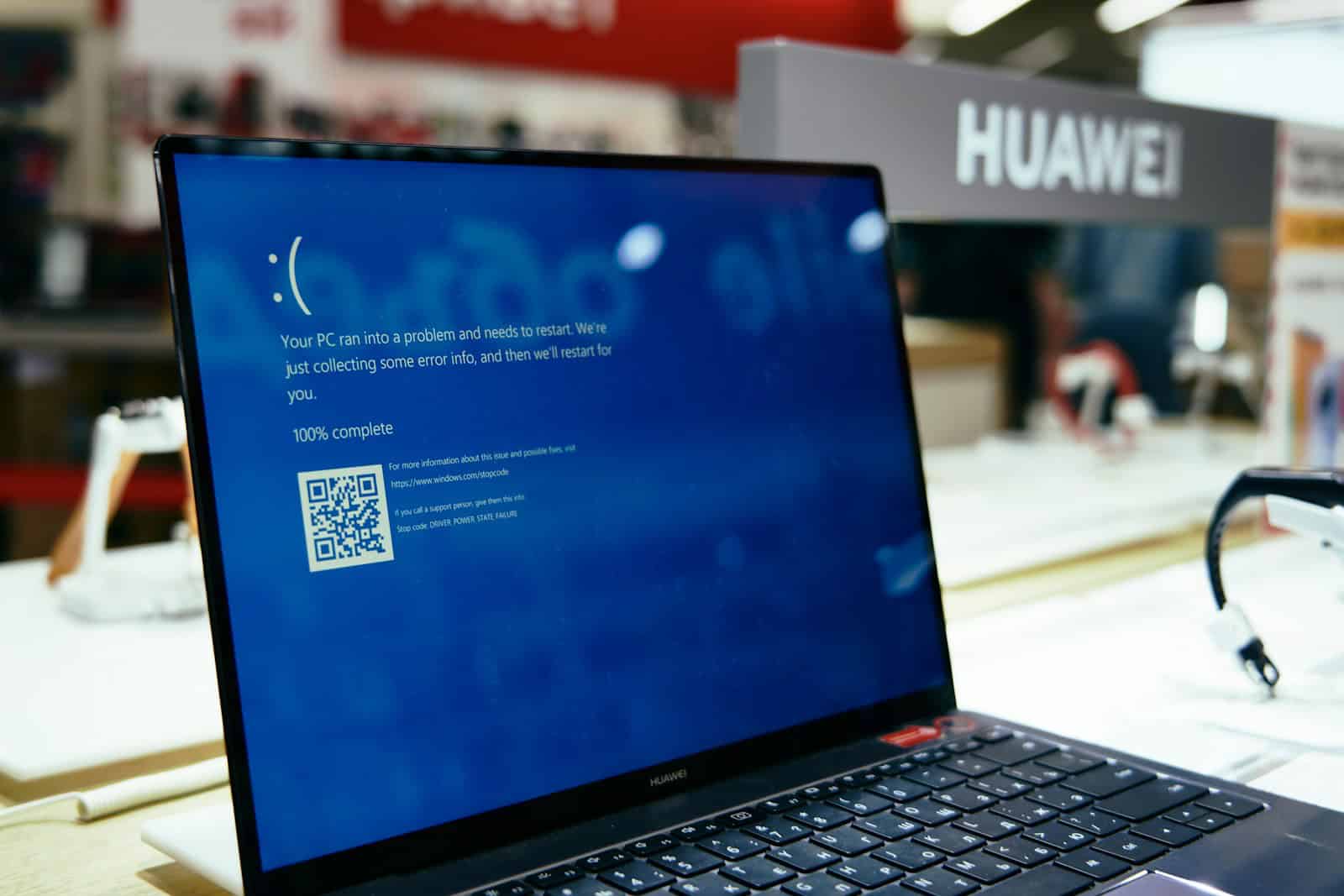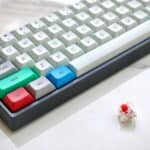Seeing the “Operating System Not Found” error on your computer screen can be alarming, especially when you need to access important files or complete urgent tasks. This error message appears when your computer’s BIOS cannot locate the operating system on your hard drive or SSD. The most common causes include incorrect BIOS settings, corrupted boot files, disconnected or failing hard drives, or issues with the Master Boot Record (MBR).
The good news is that this problem is often fixable without professional help. When this error appears, your computer has detected the storage device but cannot find the necessary boot files to start Windows or other operating systems. Many users of Dell, Acer, Sony, and other computer brands encounter this issue at some point, often after hardware changes or system updates.
Before assuming the worst, know that simple troubleshooting steps like checking BIOS settings, reconnecting storage drives, or running repair tools can often resolve the issue. These solutions can save you time and money compared to taking your computer to tech support or replacing hardware components.
Here are the steps to troubleshoot the “Operating System Not Found” error, which typically appears when your computer can’t detect or access the system partition that contains the OS:
How to Troubleshoot “Operating System Not Found”
1. Check External Devices
- Disconnect all USB drives, DVDs, external hard drives, or SD cards.
- Restart your computer.
- Sometimes the BIOS tries to boot from an external device without an OS.
2. Check BIOS/UEFI Boot Order
- Restart your computer and enter the BIOS/UEFI setup (usually by pressing F2, F10, DEL, or ESC right after turning it on).
- Go to the Boot tab and ensure your internal hard drive or SSD is set as the first boot device.
- Save changes and exit.
3. Detect Hard Drive in BIOS
- While in BIOS, make sure your hard drive/SSD is being detected.
- If it’s not listed, the drive may be disconnected or have failed:
- Power off the PC, open the case (if applicable), and check the physical connections.
- Re-seat the data and power cables on the hard drive.
4. Run Startup Repair (Windows)
- Insert a Windows installation USB/DVD and boot from it.
- Select your language, then click “Repair your computer”.
- Navigate to Troubleshoot > Advanced options > Startup Repair.
- Let it diagnose and fix boot-related issues automatically.
5. Use Command Prompt to Repair the Boot Sector
- From the recovery environment, go to Troubleshoot > Advanced options > Command Prompt.
- Run these commands one by one:
bootrec /fixmbr bootrec /fixboot bootrec /scanos bootrec /rebuildbcd - Restart your PC after completing the commands.
6. Check Drive Health
- If the above fails, your hard drive may be failing.
- Boot into the recovery environment or a live Linux USB, then run SMART tests using tools like:
chkdsk(for Windows)GSmartControlorsmartctl(for Linux)
- If the drive has bad sectors or fails SMART tests, replace it.
7. Reset or Reinstall the OS (as a Last Resort)
- If none of the above works and the drive is healthy:
- Backup your data using a recovery disk or live OS.
- Reinstall Windows or your preferred operating system.
If you’re using a laptop, consult your user manual to locate BIOS settings or diagnose hardware issues. If you’re working with a custom-built PC, also check for a failed CMOS battery, especially if BIOS settings keep resetting.
Key Takeaways
- The “Operating System Not Found” error occurs when your computer’s BIOS cannot locate bootable files on your storage device.
- Check your BIOS settings first to ensure your hard drive is properly detected and set as the primary boot device.
- Most cases can be resolved through basic troubleshooting like reconnecting drives or using Windows repair tools without data loss.
Understanding the ‘Operating System Not Found’ Error
When your computer displays the “Operating System Not Found” message, it means your system cannot locate a bootable operating system. This common error can be frustrating but is often fixable once you understand what’s happening behind the scenes.
Common Causes
Several issues can trigger the “Operating System Not Found” error. The most frequent cause is a hardware problem with the hard drive. If your drive has failed or is disconnected, your computer won’t be able to find the operating system.
Software issues are equally common culprits. Corrupted operating system files, deleted boot files, or incompatible partitions can prevent proper booting. Sometimes the problem occurs after installing a new operating system or updating an existing one.
Incorrect BIOS settings can also lead to this error. If your BIOS doesn’t recognize your hard drive or the boot order is configured incorrectly, your computer might try to boot from a drive that doesn’t contain an operating system.
Malware infections or improper system shutdowns may damage critical boot files too.
The Role of BIOS in Startup
BIOS (Basic Input/Output System) plays a crucial role in the computer startup process. It acts as the intermediary between hardware and the operating system.
When you power on your computer, BIOS runs a Power-On Self Test (POST) to check that hardware components are working properly. After the test, BIOS searches for bootable devices according to the boot order configured in its settings.
If BIOS cannot detect the hard drive containing your operating system, it will display the “Operating System Not Found” error. This might happen if:
- The hard drive connection is loose or faulty
- The boot order is incorrect
- BIOS settings need updating
- The hard drive isn’t properly recognized
Resetting BIOS to default settings often resolves detection issues. You can access BIOS setup by pressing a specific key (often F2, F10, or Del) during startup.
Master Boot Record (MBR) and Boot Process
The Master Boot Record (MBR) is a special section at the beginning of your hard drive that contains information about how the drive is partitioned and where to find the operating system.
When BIOS locates a bootable drive, it reads the MBR to find instructions on loading the operating system. If the MBR is damaged or corrupted, your computer will display the “Operating System Not Found” error.
The MBR contains three important components:
- Boot loader: The code that starts the operating system
- Partition table: Information about how the drive is divided
- Disk signature: A unique identifier for the disk
Common causes of MBR problems include:
- Virus infections targeting the boot sector
- Power outages during system updates
- Incompatible partition structures
- Failed operating system installations
Recovery tools can repair a damaged MBR using boot media like recovery disks or USB drives with installation files.
Troubleshooting Steps
When your computer displays “Operating System Not Found,” it usually means your computer can’t locate the essential files needed to start Windows. Several common fixes can resolve this issue without requiring advanced technical skills.
Initial BIOS Check
Start by checking your computer’s BIOS settings, which control how your computer starts up. To access BIOS, restart your computer and press the designated key during startup (often F2, F10, F12, or Del). The correct key usually appears on the screen during boot.
Once in BIOS, verify that your hard drive is properly detected. If your hard drive isn’t listed, it might be disconnected or failing.
Try loading the “Optimal Defaults” settings, which can resolve configuration issues. This option is usually found in the main BIOS menu or under a tab labeled “Exit” or “Save & Exit.”
After making changes, save and exit BIOS by selecting the appropriate option, typically by pressing F10 and confirming with Enter.
Boot Order and Devices
The boot order determines which devices your computer tries to start from first. In BIOS, locate the “Boot” section and ensure your main hard drive has priority.
A common problem occurs when your computer tries to boot from a USB drive or network instead of your hard drive. Rearrange the boot order so your hard drive (where Windows is installed) appears first in the list.
If you’ve recently connected external devices, try disconnecting them. Sometimes USB drives or external hard drives can confuse the boot process.
For serious issues, you may need to create Windows installation media on a USB drive using another working computer. Set your computer to boot from this USB device to access recovery options.
Using Windows Recovery Options
If you can boot from Windows installation media (DVD or USB), you can access powerful repair tools. Choose “Repair your computer” instead of installing Windows when prompted.
From the recovery environment, select “Troubleshoot” then “Command Prompt” to access repair commands:
- fixmbr: Repairs the Master Boot Record
- fixboot: Writes a new boot sector
- rebuildbcd: Rebuilds the Boot Configuration Data
Type each command followed by Enter:
bootrec /fixmbr
bootrec /fixboot
bootrec /rebuildbcd
Try the “Startup Repair” option from the troubleshooting menu for an automated fix. This can resolve common boot issues without requiring manual commands.
If these steps don’t work, your Windows installation may be corrupted or your hard drive might be failing. Consider backing up your data from another computer if possible.
Advanced Solutions and Repair Techniques
When simple fixes fail to resolve the “Operating System Not Found” error, more advanced repair techniques may be necessary. These methods can address underlying problems with boot sectors, partitions, or the operating system itself.
Repairing the MBR and Boot Sector
The Master Boot Record (MBR) is critical for system startup. When it becomes corrupted, Windows cannot load properly. To repair the MBR in Windows 10, users need access to recovery tools.
Boot from the Windows 10 installation media (CD/DVD or USB). Select “Repair your computer” when the installation screen appears. Navigate to Troubleshoot > Advanced options > Command Prompt.
At the command prompt, type these commands in sequence:
bootrec /fixmbr(repairs the MBR)bootrec /fixboot(writes a new boot sector)bootrec /scanos(scans for Windows installations)bootrec /rebuildbcd(rebuilds the boot configuration data)
Each command serves a specific purpose in repairing different aspects of the boot process. After running these commands, restart the computer to check if the issue is resolved.
Manual Partition and File System Checks
Checking and repairing partitions can solve many boot problems. The DISKPART utility and CHKDSK commands are valuable tools for this purpose.
To examine partitions, boot to the recovery environment and open Command Prompt. Type diskpart to launch the utility. Use list disk, then select disk X (replace X with the number of your drive).
Type list partition to view all partitions. Ensure the system partition is marked as active. If not, select it with select partition X and type active.
For file system checks, exit DISKPART and run:
chkdsk C: /f /r
The /f flag fixes errors while /r locates bad sectors. This process can take several hours for larger drives or when numerous issues are found. External and internal hard drives can be checked using the same method.
Reinstalling the Operating System
When all repair attempts fail, reinstalling Windows may be necessary. This should be considered a last resort after trying other solutions.
Before proceeding, back up important data using an external hard drive. If possible, connect the problematic drive to another computer to retrieve files.
For a clean install, boot from Windows installation media and select “Install now.” Choose “Custom: Install Windows only” instead of the upgrade option. Delete existing partitions if necessary and create new ones.
During installation, Windows will format the drive and create required partitions automatically. This process resolves most boot-related issues by replacing potentially corrupted system files.
If the computer displays “Media Test Failure, Check Cable” during boot, verify all drive connections before reinstalling. Loose or damaged cables can prevent access to the hard drive and cause installation failures.
Professional Assistance and Resources
When faced with an “Operating System Not Found” error that you can’t fix yourself, professional help is available. Many computer manufacturers offer dedicated technical support services for these boot issues.
Manufacturer Support Options:
- Dell: Technical support via phone, online chat, or remote assistance
- Acer: Customer service portals with specialized boot error solutions
- Sony Vaio: While Sony discontinued Vaio production, support resources still exist online
For computers that won’t boot, services like JustAnswer connect users with Verified Experts who specialize in operating system errors. These professionals can provide step-by-step guidance tailored to your specific situation.
Local computer repair shops often have technicians experienced with boot failures. They can physically examine your system if the error stems from hardware problems.
Online forums dedicated to your specific computer model may offer solutions from users who encountered similar issues. Many manufacturers maintain community support forums where both tech experts and users share solutions.
If your data is valuable, professional data recovery services can help retrieve information from drives with boot errors. This option is especially important if your backup strategy isn’t current.
When seeking help, note any error codes or unusual sounds from your device. This information helps technicians diagnose the problem more efficiently.
Frequently Asked Questions
Computer boot problems can be frustrating, especially when you see the dreaded “operating system not found” message. These common questions address specific troubleshooting methods for different Windows versions and computer brands.
What steps can be taken to resolve a ‘no operating system’ error on a Windows 10 computer?
First, check your BIOS settings to ensure the correct boot order is set. The hard drive containing Windows should be the first boot device.
Inspect all cable connections to make sure your hard drive is properly connected. Loose cables can prevent the system from detecting the drive.
Use Windows 10 installation media (USB or DVD) to access recovery options. Select “Repair your computer” and run the Startup Repair tool.
If Startup Repair doesn’t work, access Command Prompt from the recovery environment and run repair commands like “bootrec /fixmbr”, “bootrec /fixboot”, and “bootrec /rebuildbcd”.
How can a missing operating system issue be troubooted and fixed on a Windows 7 PC?
Boot from the Windows 7 installation disc and select “Repair your computer.” Choose Command Prompt from the System Recovery Options.
Run the command “bootrec /rebuildbcd” to rebuild the Boot Configuration Data. This repairs data needed for the boot process.
Check for hard drive failures by running “chkdsk C: /f /r” from Command Prompt. This command scans for and repairs disk errors.
If these steps don’t work, the Master Boot Record might be damaged. Run “bootrec /fixmbr” followed by “bootrec /fixboot” to repair it.
What are the causes and solutions for an ‘operating system not found’ message on Windows 11?
Common causes include incorrect BIOS boot sequence, corrupted boot records, disconnected hard drives, or hardware failures.
Enter BIOS settings at startup (usually by pressing F2, F10, or Delete) and verify the correct hard drive is set as the primary boot device.
Create a Windows 11 recovery drive using another computer. Boot from this drive and select “Troubleshoot” > “Advanced options” > “Startup Repair.”
For advanced users, access Command Prompt and run “bootrec /scanos” to check if Windows installations are recognized. Then use the appropriate repair commands.
What should be checked when an HP laptop indicates that the operating system is missing?
Check if the hard drive is detected in BIOS. On HP laptops, press F10 during startup to access BIOS and look for the storage device in the hardware list.
Run HP’s built-in hardware diagnostics by pressing F2 at startup. Select “Component Tests” and run the hard drive test to check for physical drive failures.
If the drive passes tests but still won’t boot, use HP Recovery Media to perform system repairs. If unavailable, create Windows recovery media on another computer.
Consider removing and reconnecting the hard drive if you’re comfortable opening the laptop. Some HP models have easy-access panels for this purpose.
How to address the ‘operating system not found’ error on a Sony Vaio notebook?
Press F2 or F3 at startup to access the BIOS on Sony Vaio computers. Verify the hard drive is detected and set as the primary boot device.
Use Sony’s built-in recovery options by pressing F10 at startup on some models. If available, this can restore system files without data loss.
Try booting into safe mode by pressing F8 repeatedly during startup. If successful, run System File Checker by typing “sfc /scannow” in Command Prompt.
For persistent issues, use a Windows installation disc to perform Startup Repair or run bootrec commands through Command Prompt.
What troubleshooting methods should be applied when an Acer computer displays an ‘operating system not found’ message?
Access Acer’s BIOS by pressing F2 during startup. Check if the hard drive appears in the boot devices list and ensure it’s properly prioritized.
Use Acer Care Center if you can boot from another device. This built-in tool can diagnose and fix system issues including boot problems.
Create a bootable recovery drive using Acer Recovery Management on another Acer computer if possible. Boot from this drive to restore system files.
For advanced troubleshooting, use Windows installation media to access Command Prompt and run disk checking tools like “chkdsk /f /r” and boot repair commands.







